Abstract
Sypherd, Paul S. (University of California, San Diego). Formation of ribosomes from precursor ribonucleoprotein particles. J. Bacteriol. 90:411–417. 1965.—Amino acid deprivation of a “relaxed” mutant leads to the accumulation of ribonucleoprotein particles. The possibility that these particles are equivalent to normal ribosome precursors was investigated. This was accomplished by determining the fate of such particles after the termination of starvation, and subsequent growth. It was found that both the nucleic acid and the protein moieties of the “relaxed” particles were converted to mature ribosomes during the recovery phase. From kinetic measurements with “relaxed” particles and normal ribosome precursors, it was shown that they were metabolically indistinguishable. It was concluded that the ribonucleoprotein “relaxed” particles accumulated by the relaxed mutant are immature ribosomes, and equivalent to ribosome precursors which occur under normal growth conditions.
Full text
PDF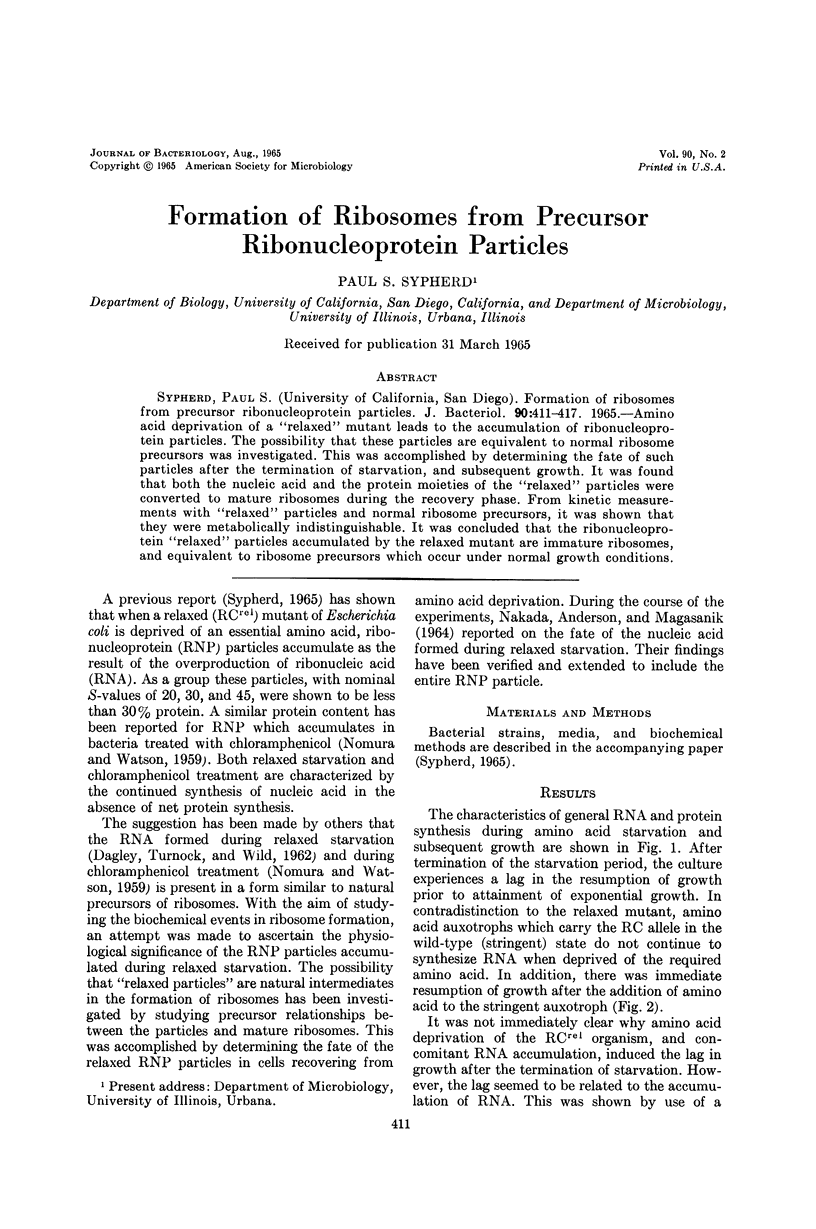
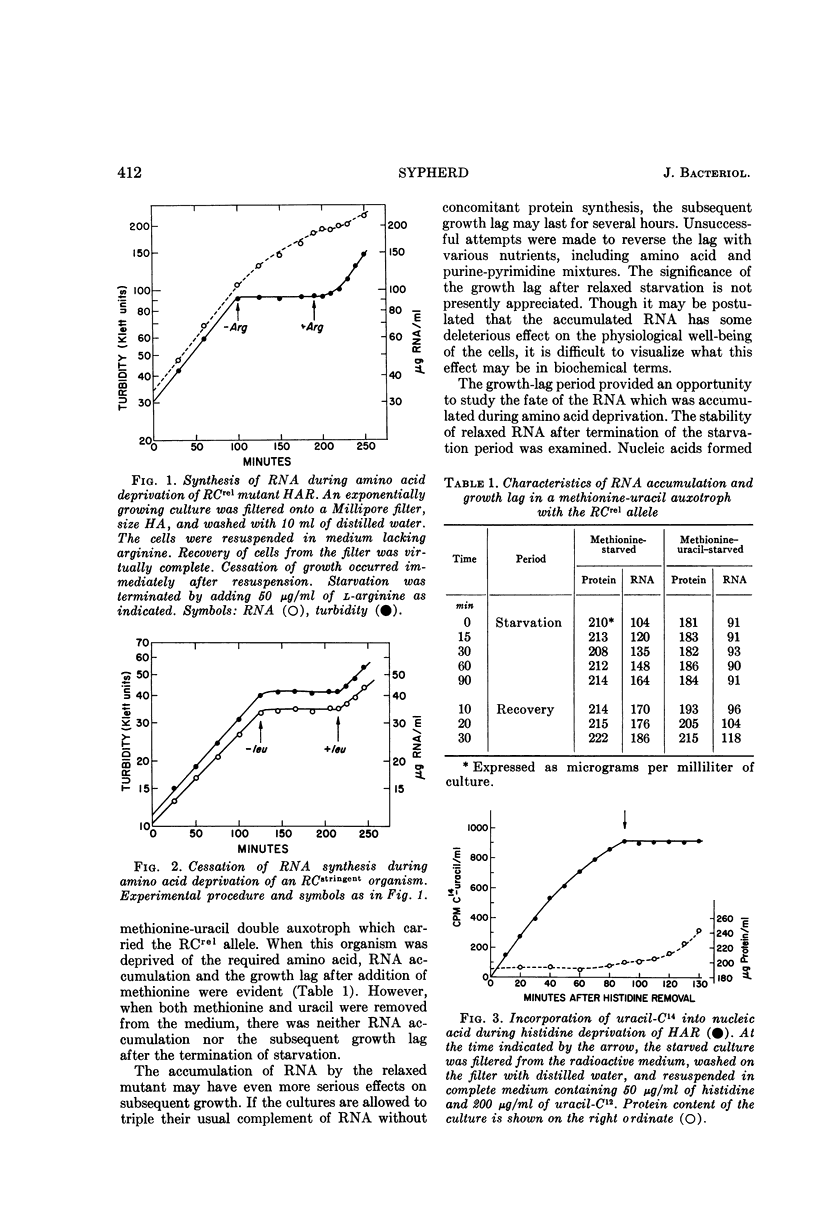
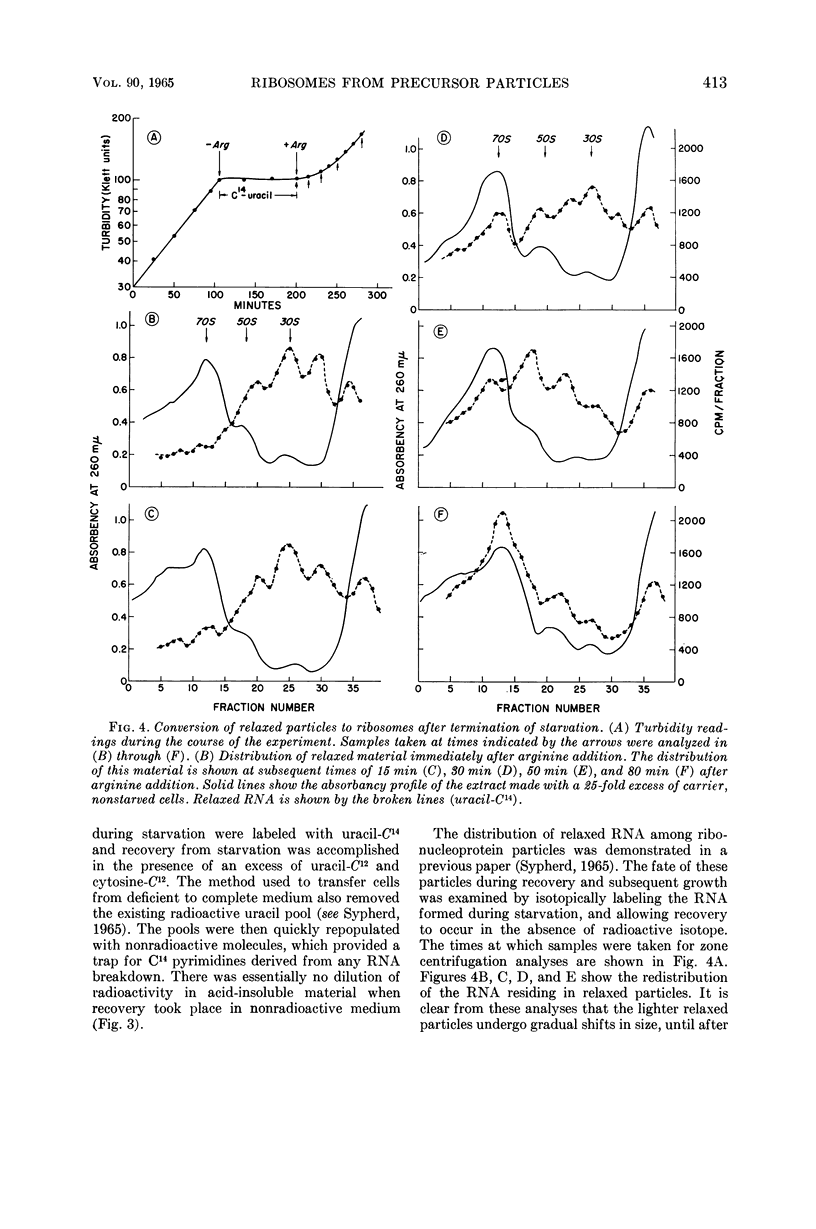
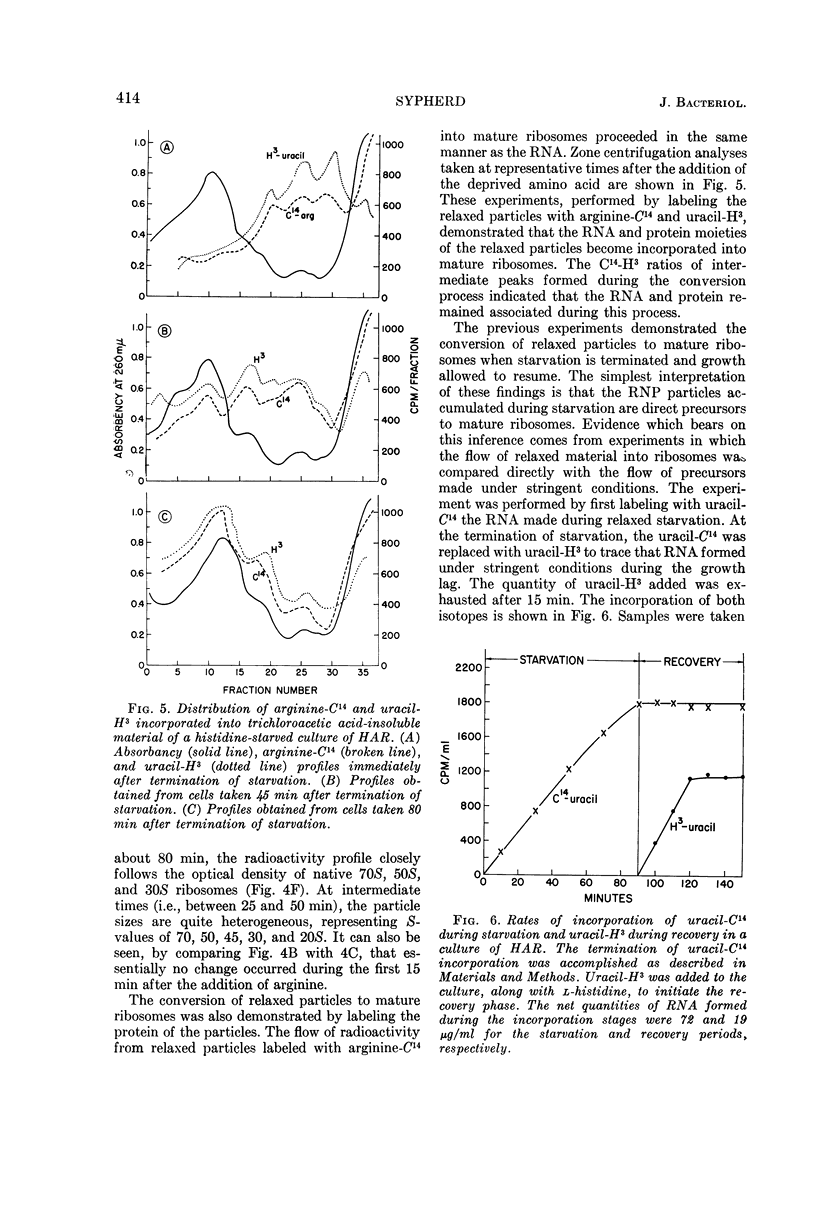
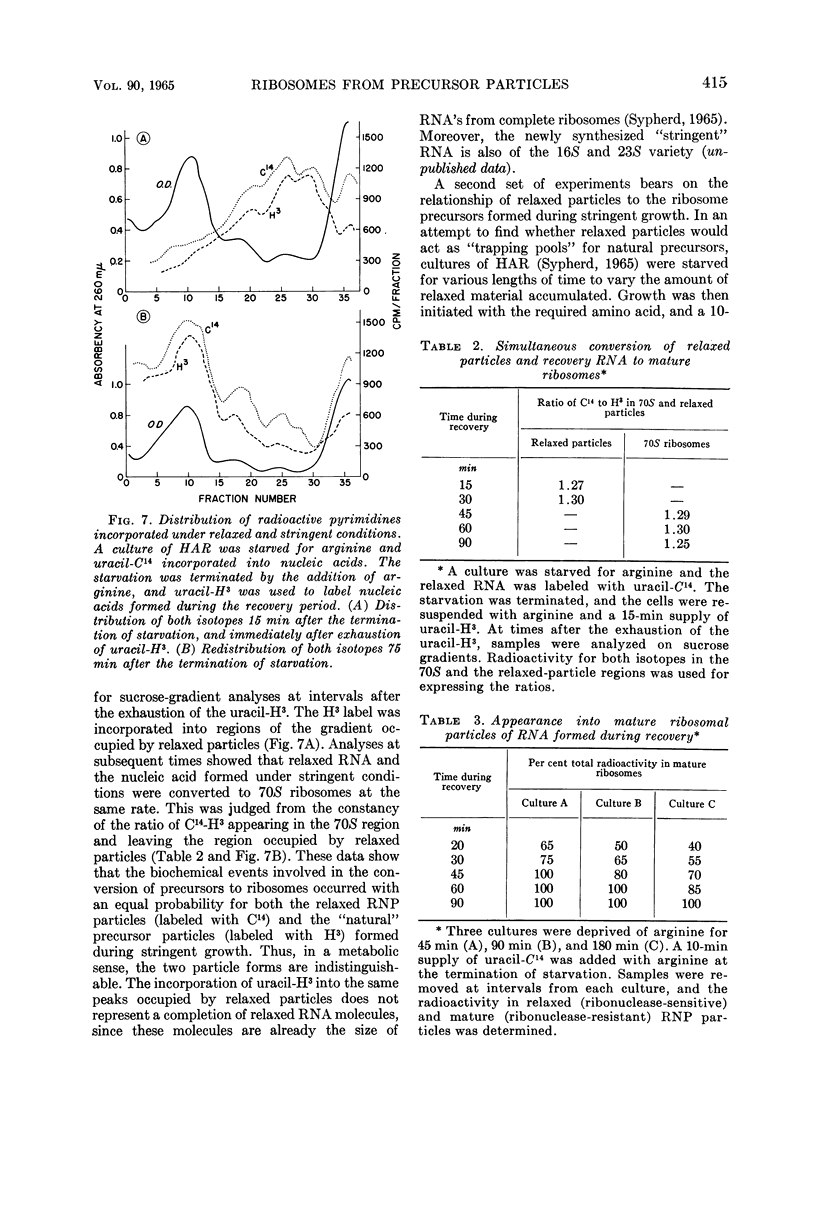
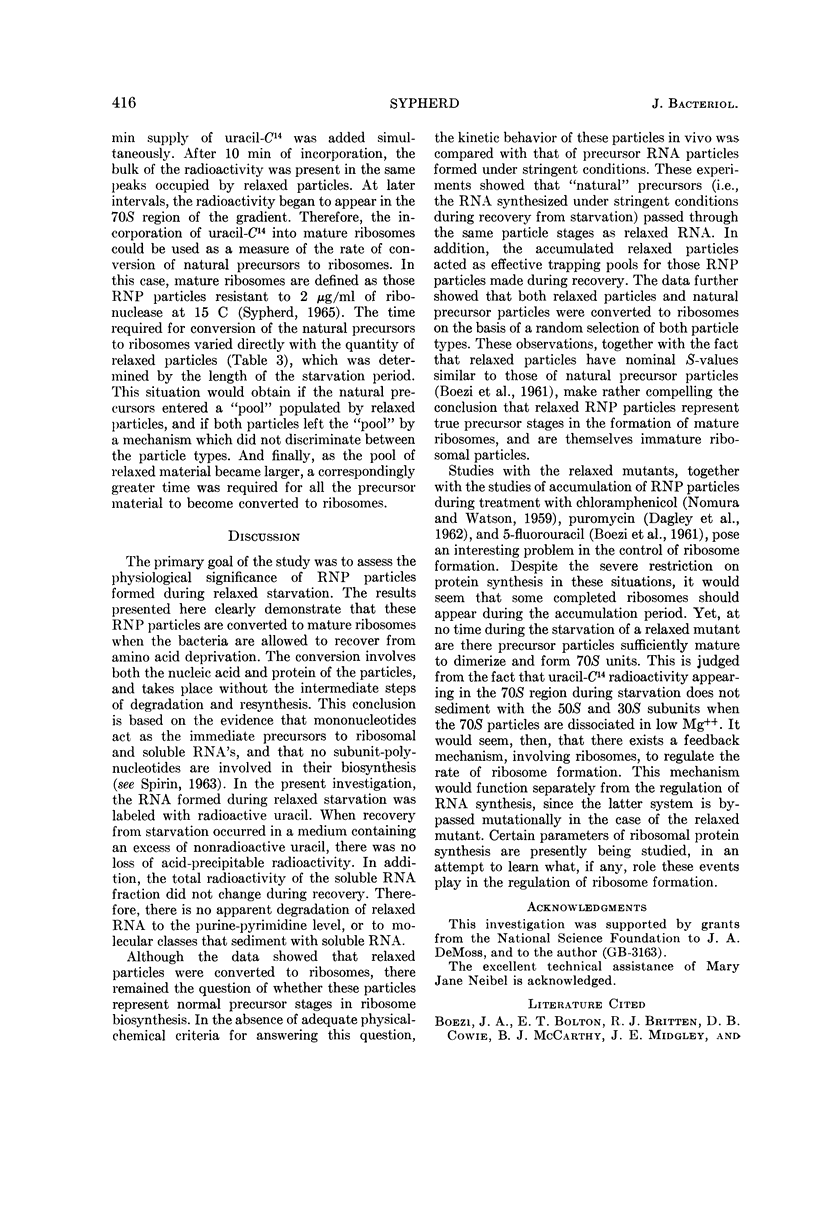
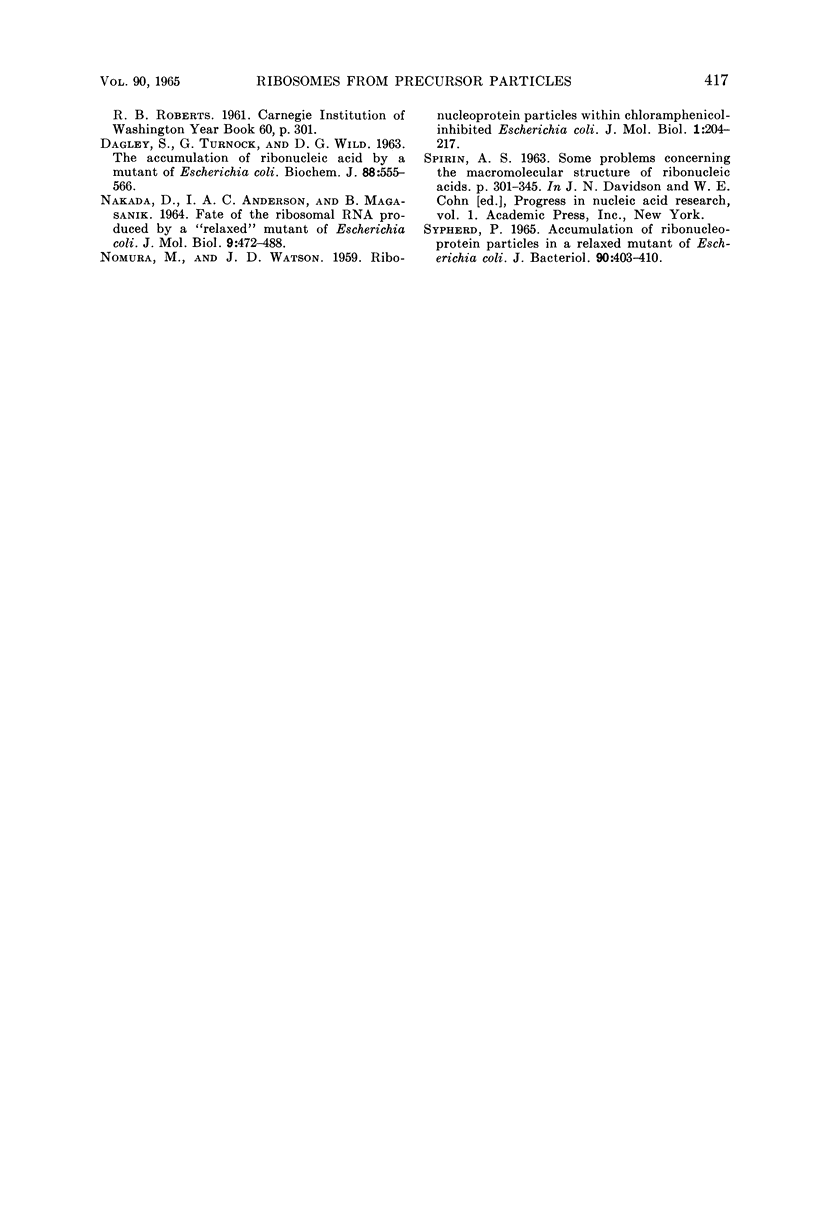
Selected References
These references are in PubMed. This may not be the complete list of references from this article.
- DAGLEY S., TURNOCK G., WILD D. G. THE ACCUMULATION OF RIBONUCLEIC ACID BY A MUTANT OF ESCHERICHIA COLI. Biochem J. 1963 Sep;88:555–566. doi: 10.1042/bj0880555. [DOI] [PMC free article] [PubMed] [Google Scholar]
- NAKADA D., ANDERSON I. A., MAGASANIK B. FATE OF THE RIBOSOMAL RNA PRODUCED BY A "RELAXED" MUTANT OF ESCHERICHIA COLI. J Mol Biol. 1964 Aug;9:472–488. doi: 10.1016/s0022-2836(64)80220-5. [DOI] [PubMed] [Google Scholar]
- SYPHERD P. S. ACCUMULATION OF RIBONUCLEOPROTEIN PARTICLES IN A RELAXED MUTANT OF ESCHERICHIA COLI. J Bacteriol. 1965 Aug;90:403–410. doi: 10.1128/jb.90.2.403-410.1965. [DOI] [PMC free article] [PubMed] [Google Scholar]


